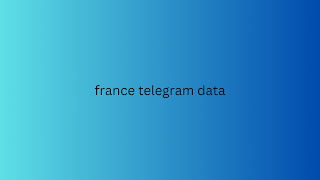How do you properly process a source reference?
Posted: Wed Dec 18, 2024 9:15 am
1. What is content copyright?
Copyright is one of the most important rights when it comes to content. We also know it under the English term copyright . Copyright is the exclusive right of the creator of a work of literature, science or art to make that work public and to reproduce it, subject to restrictions set by law.
2. How do you get copyright on your content?
Copyright comes naturally to you. Your content must be sufficiently creative for that. It must have its own and original character and bear the stamp of the creator. So it may not be too banal and trivial. The starting point is that the creator is usually also the copyright holder.
“Content” is broad, by the way. From blogs and e-books to paintings, social media posts, podcasts, webinars, films and series.
The purpose of a source reference is to link the work and the name of the creator of that work. It must therefore be sufficiently clear which name belongs to which work. Therefore, always mention – if reasonably possible – both the name of the creator and the source.
Also good to know:
Including only the link to a website, without the name of the creator, is not allowed.
Using the word 'source' as a hyperlink to a website is not allowed.
4. Can you embed someone else's video or text?
Embedding is not considered a new france telegram data publication. So you don't need permission to embed content, and even attribution is not required.
Also good to know:

You may not embed if doing so would allow you to bypass a paywall or login.
Pinning something on Pinterest is not embedding.
Please note that YouTube automatically places third party cookies by embedding . If you have not included this in your cookie statement or consent banner, please do so. This tip was not in Charlotte's book, you get it from me.
All questions in this article are subject to ifs and buts, exceptions and nuances. That's just how the law works.
Also read: Copyright: avoid a fine & protect your own content
5. Who owns the rights if you create content on behalf of someone else?
In general, the contractor (often a freelancer) is the creator and therefore the copyright holder. Despite the fact that the client gives you instructions, as a freelancer you usually have enough room for creative input.
Copyright is one of the most important rights when it comes to content. We also know it under the English term copyright . Copyright is the exclusive right of the creator of a work of literature, science or art to make that work public and to reproduce it, subject to restrictions set by law.
2. How do you get copyright on your content?
Copyright comes naturally to you. Your content must be sufficiently creative for that. It must have its own and original character and bear the stamp of the creator. So it may not be too banal and trivial. The starting point is that the creator is usually also the copyright holder.
“Content” is broad, by the way. From blogs and e-books to paintings, social media posts, podcasts, webinars, films and series.
The purpose of a source reference is to link the work and the name of the creator of that work. It must therefore be sufficiently clear which name belongs to which work. Therefore, always mention – if reasonably possible – both the name of the creator and the source.
Also good to know:
Including only the link to a website, without the name of the creator, is not allowed.
Using the word 'source' as a hyperlink to a website is not allowed.
4. Can you embed someone else's video or text?
Embedding is not considered a new france telegram data publication. So you don't need permission to embed content, and even attribution is not required.
Also good to know:

You may not embed if doing so would allow you to bypass a paywall or login.
Pinning something on Pinterest is not embedding.
Please note that YouTube automatically places third party cookies by embedding . If you have not included this in your cookie statement or consent banner, please do so. This tip was not in Charlotte's book, you get it from me.
All questions in this article are subject to ifs and buts, exceptions and nuances. That's just how the law works.
Also read: Copyright: avoid a fine & protect your own content
5. Who owns the rights if you create content on behalf of someone else?
In general, the contractor (often a freelancer) is the creator and therefore the copyright holder. Despite the fact that the client gives you instructions, as a freelancer you usually have enough room for creative input.